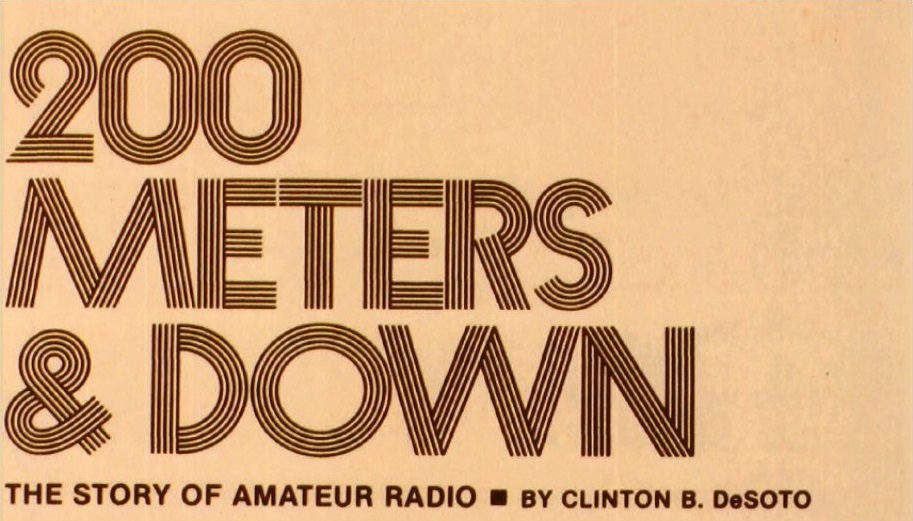Do you wonder how amateur radio started, or how our bands were determined, or how the ARRL started and how it became the American Radio Relay League? All those questions and more are answered in “200 Meters and Down”. Originally published in 1936, this 184 page book is an easy, informative read; well worth a position in any ham’s book shelf.
The author, Clinton B. DeSoto, started the book as an exercise; he wanted to document the formative years of amateur radio for future generations. His writing skills brought him to the attention of the staff at ARRL, where he served on the secretarial staff; his workload there necessitated that he set aside the manuscript for a few years. As it turns out, that hiatus was very beneficial. Given his position at ARRL, and his access to files there, he was able to add substantial details.
The first three chapters relate the formative years of experimentation. Transmitters used spark gaps and a “station’s” power was related in terms of the gap of the spark. As you can imagine, transmissions were extremely broadband and bands were wide open to everyone, commercial or amateur. As a result, the government eventually stepped in to make everyone play nice. As the military and commercial operations took an interest in wireless communication, amateurs were relegated to 200 meters and below since those frequencies had been deemed undesirable.
The next few chapters relate the maturation of the art of amateur wireless use to relay messages. Hiram Maxim realized the utility of relays and organized stations to relay messages across country. Recognizing the need to organize the relay stations, Maxim helped create the ARRL. I found it interesting that in February 1917, when the ARRL was organized, K.T. Gravely of Danville VA was designated as a member of the Board of Direction.
World War I saw “…between 3500 to 4000 and probably more…” radio amateurs who provided critical communication services. After the war, the use of (and interference in) the airwaves skyrocketed; governments on both sides of the Atlantic collaborated to define (and constrict) band access. A few chapters relate the efforts of government and private organizations to (sort of) play well together. This is another area where the author’s access to ARRL records was crucial. He devoted a number of chapters to the development of transatlantic communications, the challenges the amateurs faced and methods they used to overcome them. The reader is taken “behind the curtain” to reveal how governments and organizations carved out plans to allocate bands (plans which would subsequently be rewritten) and create international organizations to facilitate cooperation. The negotiations and technical issues involved to creating band plans with international agreement are clearly documented.
Amateur radio’s contributions to international expeditions and to emergencies make a fascinating read. The author maintains that some expeditions would not have taken place without the presence of an amateur on board and assurances that communication would be maintained.
Do you wonder how we got to where we are today? This book is for you.
“200 Meters and Down” is available from the usual suspects as well as the ARRL Store for $15.95
Jim Hassall W4BEA
